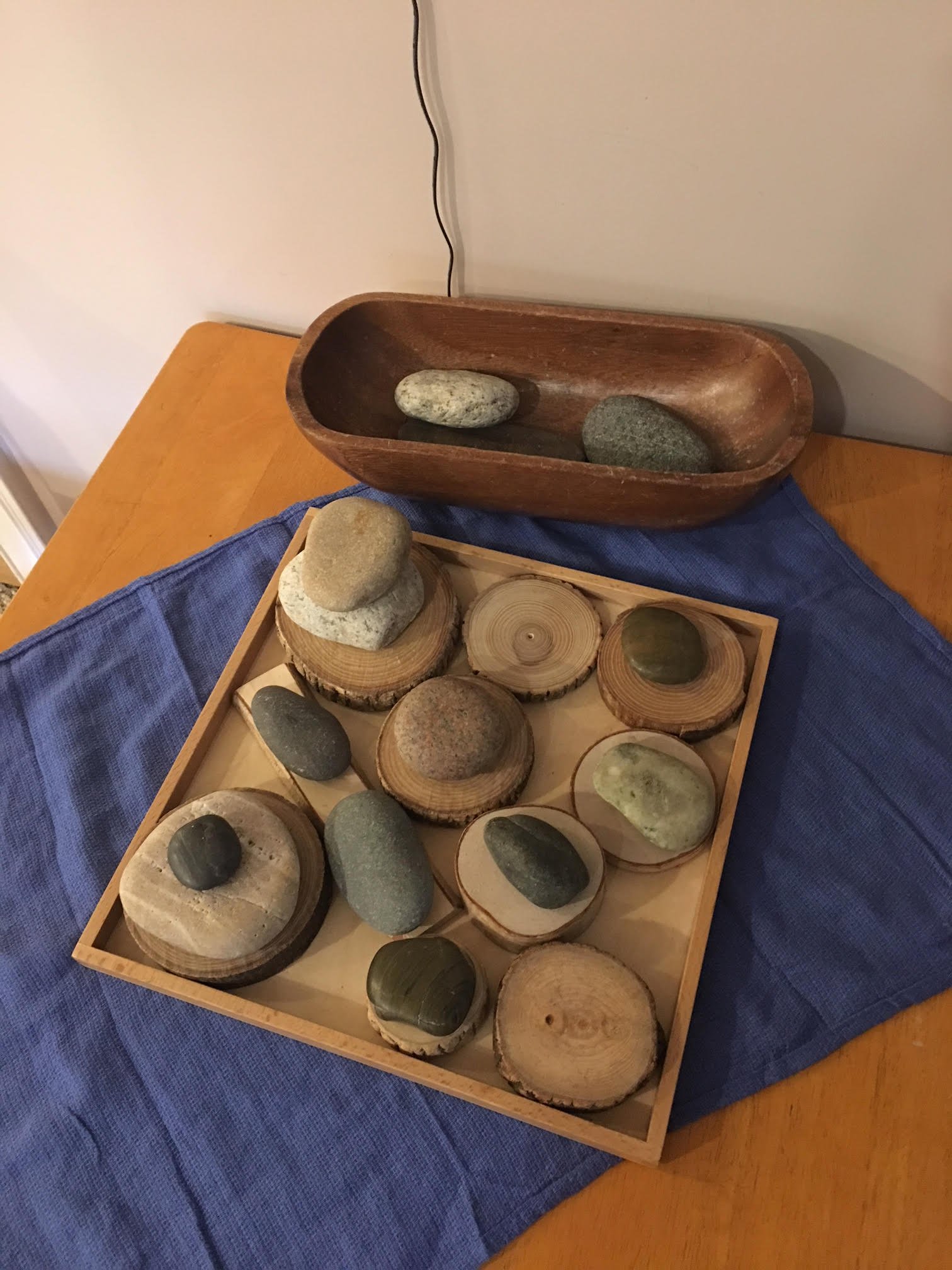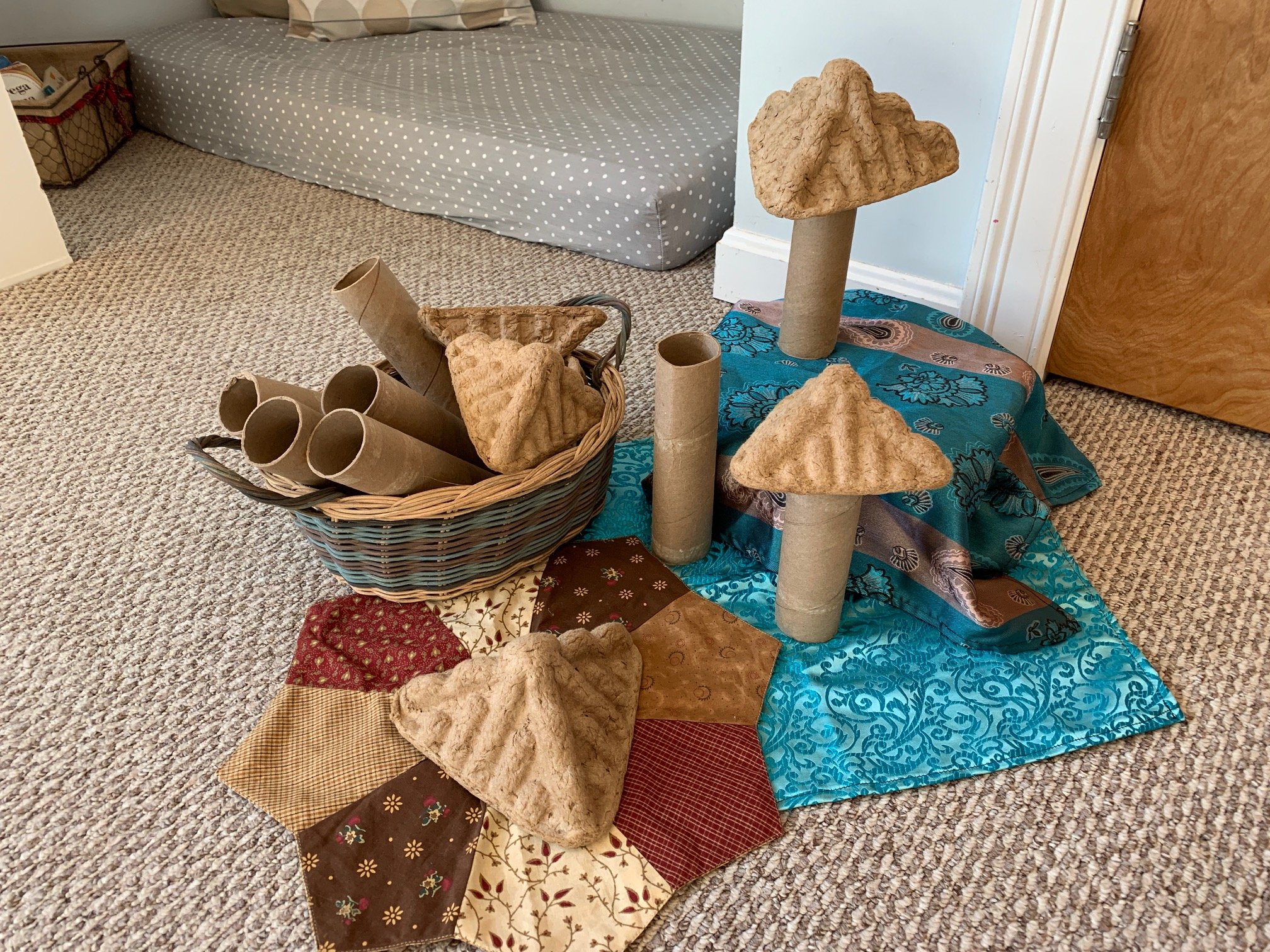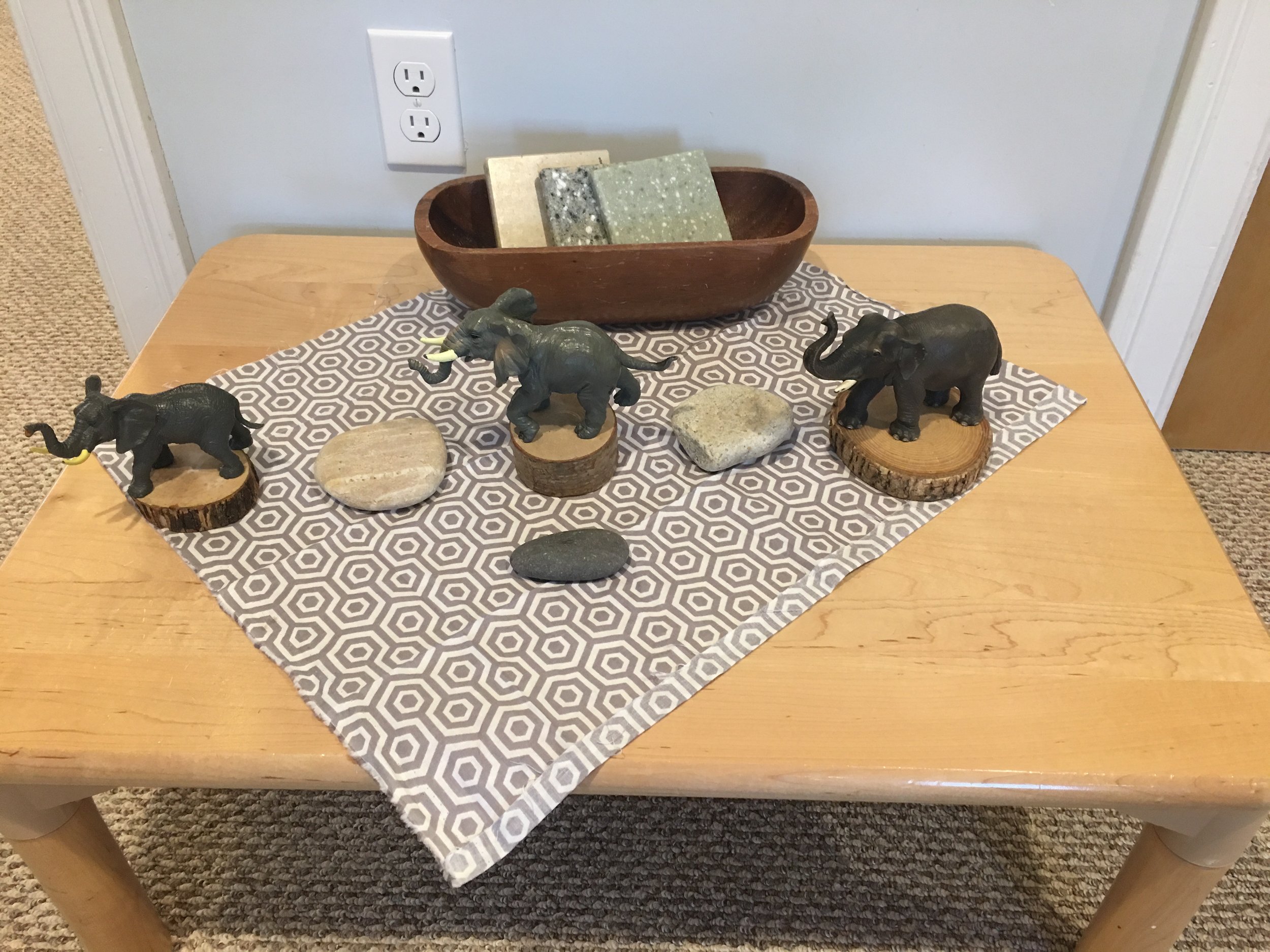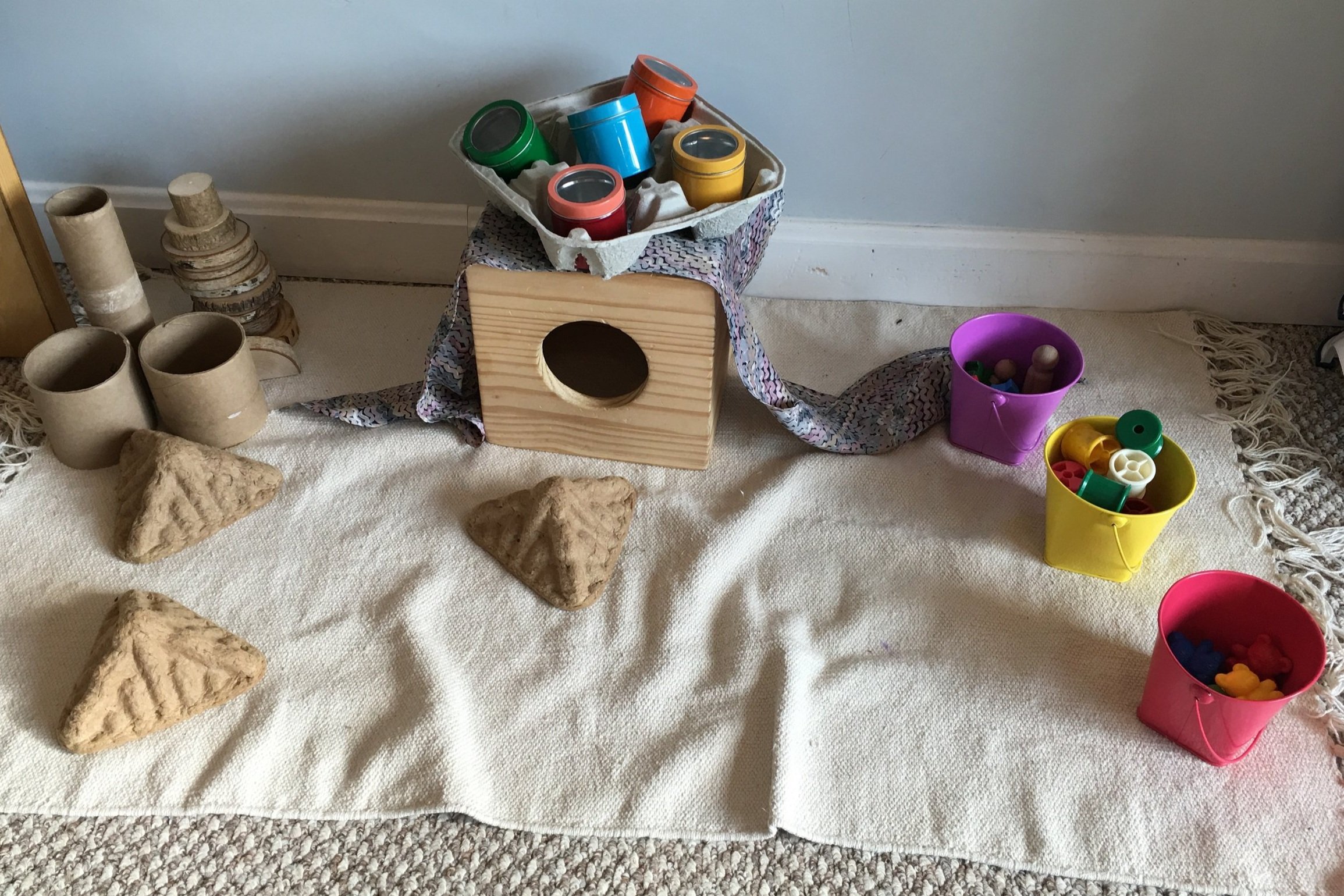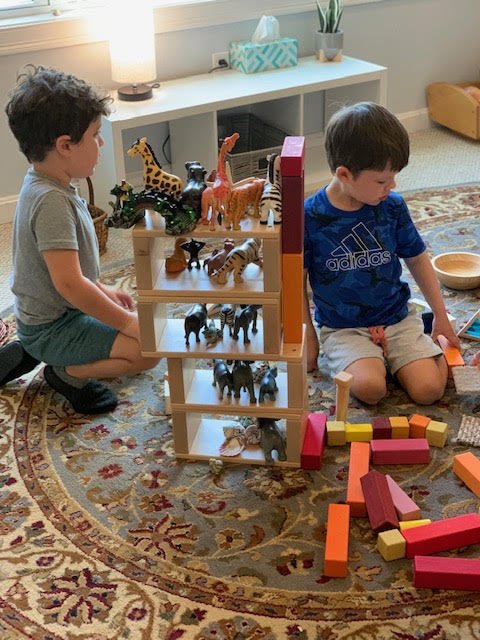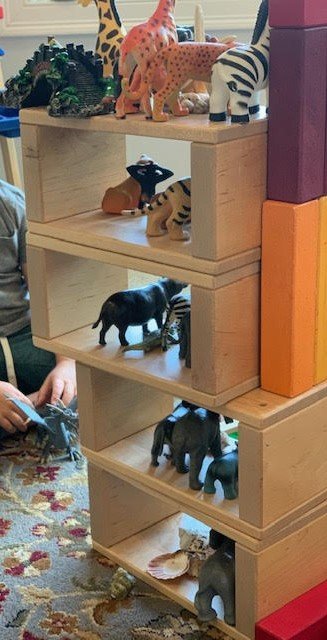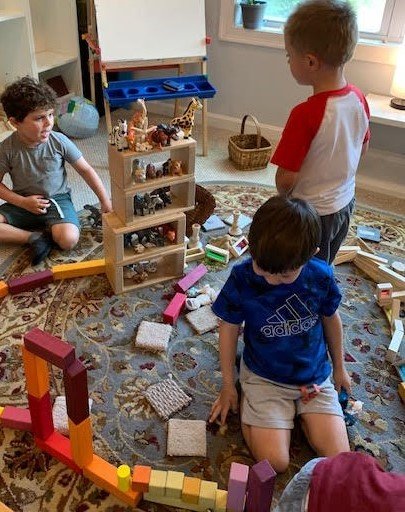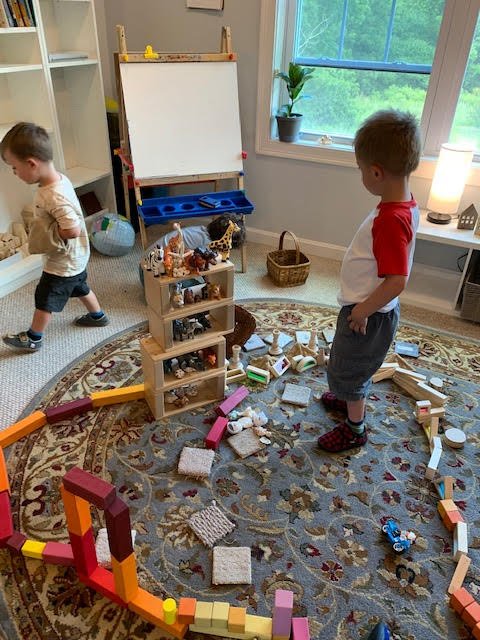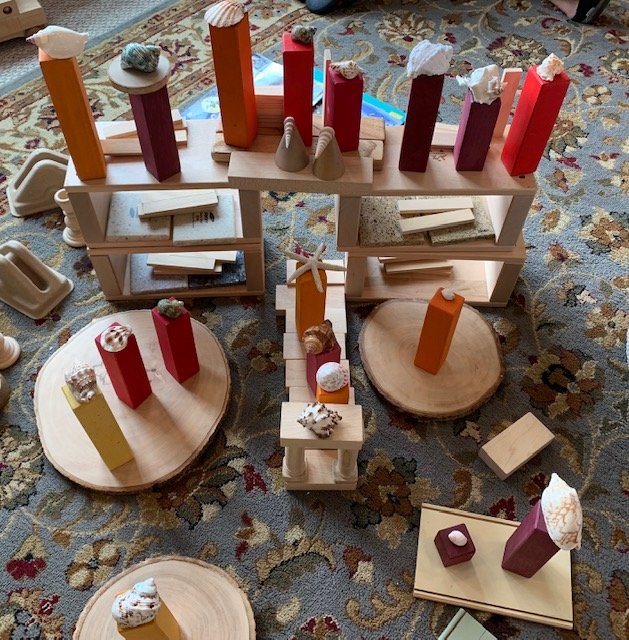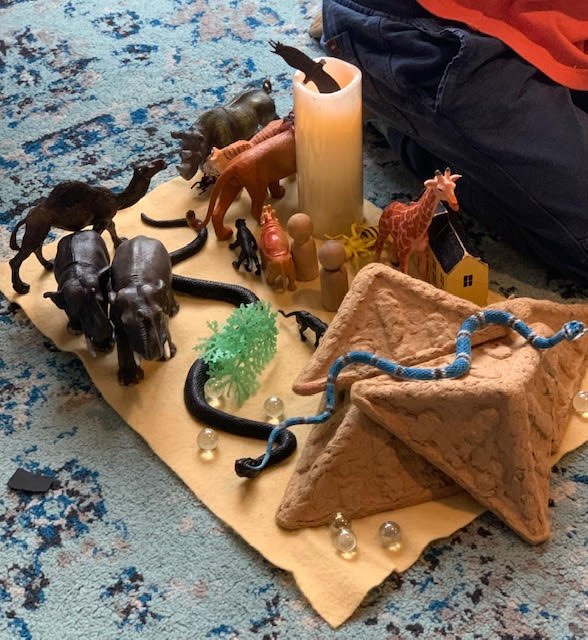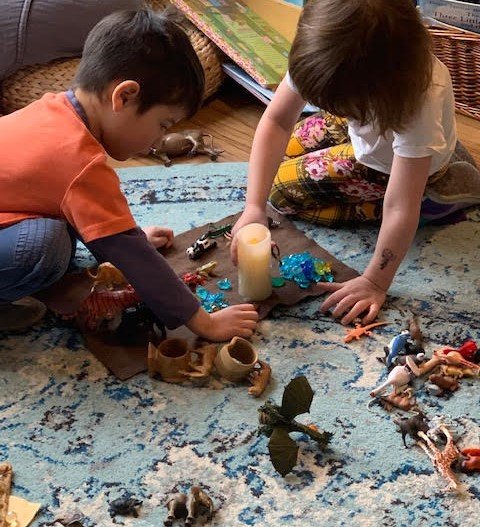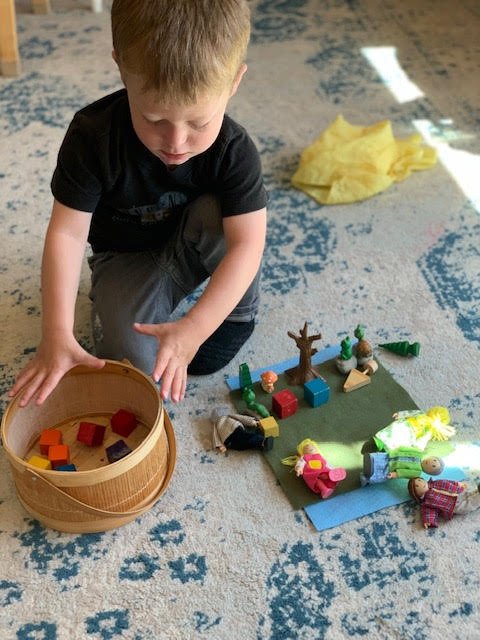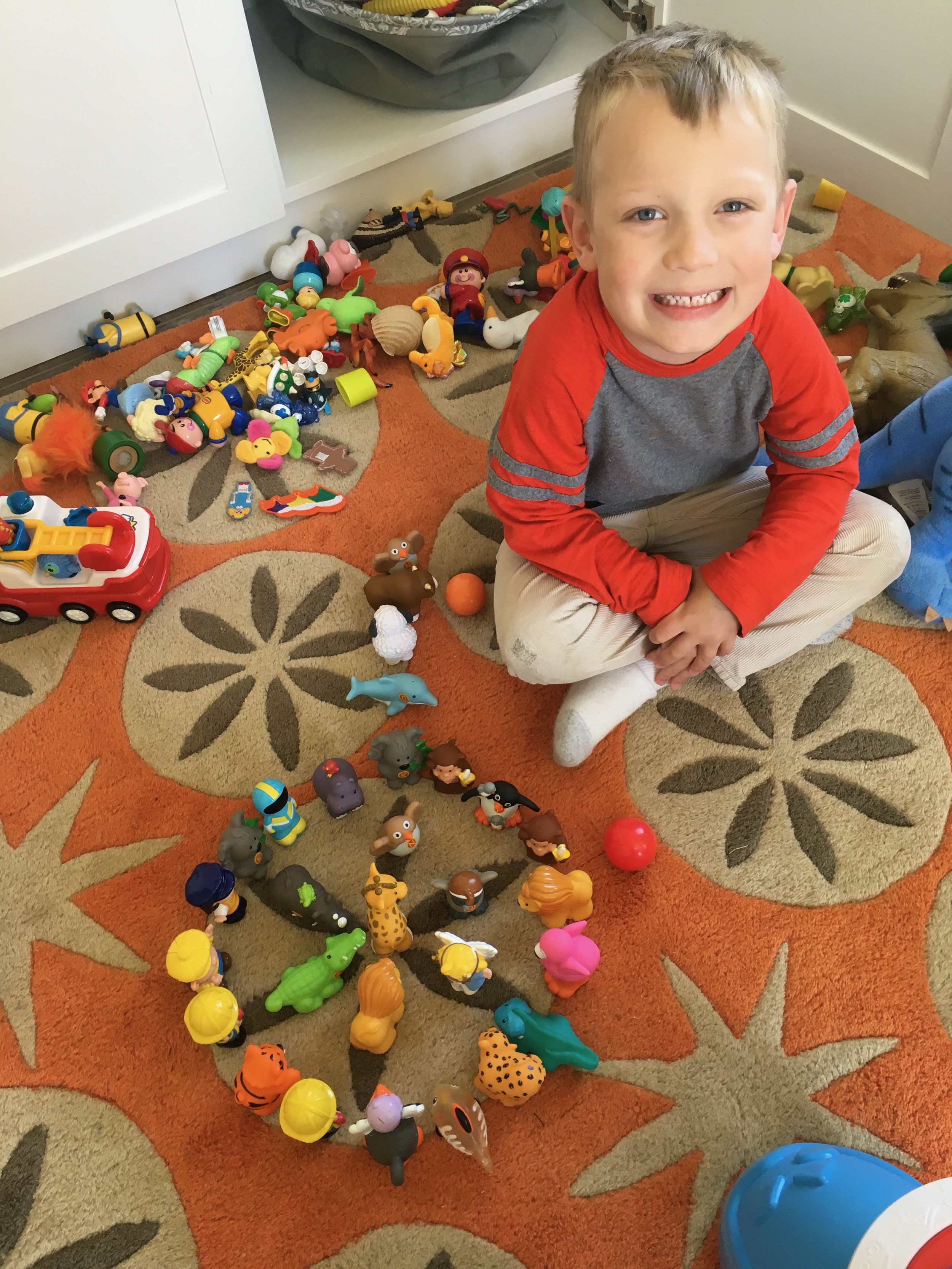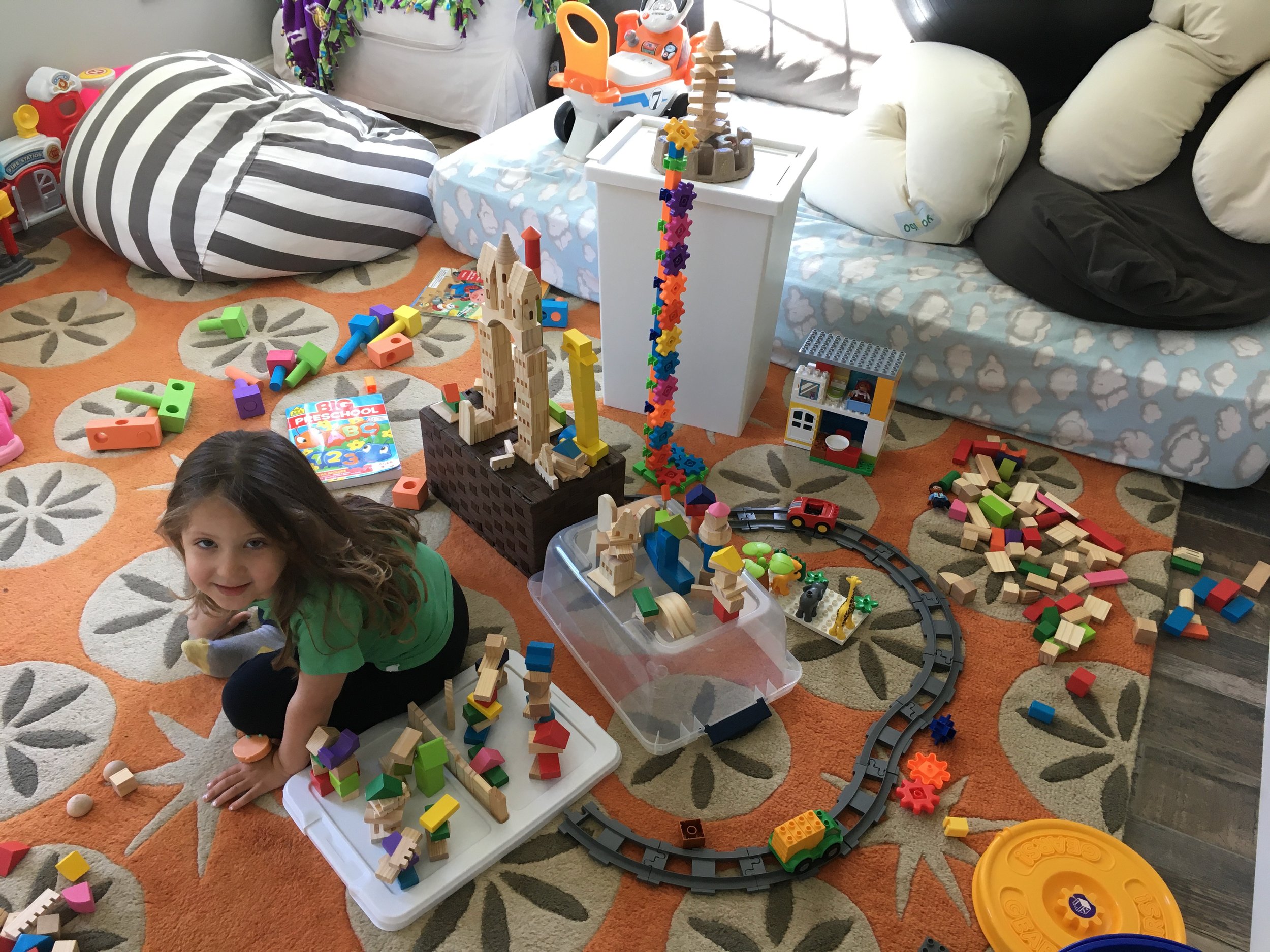NURTURE YOUR CHILD’S STORYTELLING SKILLS
And Spark Their Creative Play While Conserving Resources
It’s happened to all of us at least once. We witness a young child opening a gift or a package, only to pause and excitedly run off clutching bubble wrap that streams behind, toss packing shreds in the air with glee, or climb fully inside the box…all before even getting to the packaged item itself.
Children are fascinated by things we usually consider junk—used gift wrap and ribbon, packing materials, egg cartons, toilet paper or paper towel tubes, empty milk cartons, water bottles, and their caps... At Harmony, we take advantage of this innate interest by saving and providing these types of materials on our play shelves, alongside building blocks, natural items (pinecones, seashells, acorns…), pom poms, animal figurines, and so on. These Loose Parts—items that can be moved around, designed, and redesigned—provide infinite opportunities for creative engagement, and we love watching children discover them and innovate structures, worlds, and storylines driven by their own interest and imagination.
Case in point: one recent joyful day at Harmony, a few children began building a tower from blocks, then carefully placed an assortment of animals on each level. “It’s a Zoo Hotel,” we heard them say, as they were drawn deeper into the narrative their collaborative, imaginative loose parts play wove together. The structure morphed and grew as the children’s play advanced and drew the attention and imagination of other children.
Another day, a little girl independently placed and stacked blocks, and strategically added shells. She first considered it a zoo, then a hotel, then ultimately announced, “It’s a Shell Museum”—and explained that this was a quiet exhibit, in which the shells were the star of the show.
A child's sense of story begins at home, listening to the books we read to them from infancy, the tales we share about our own childhoods, the stories their grandparents re-tell that they heard when they were young, and eventually, the yarns they hear at school and from friends. Listening to all this, children begin to create vivid mental images of what each story’s characters look like and where it is taking place. In time, they begin to interpret these stories and others through play—whether re-enactments of tales they’ve heard, or newly imagined worlds and narratives.
Usually, when we witness this happening—like with Harmony’s recent Zoo Hotel and Shell Museum—our job as teachers, parents, or caregivers is not to intervene, and instead, let little imaginations flow undisturbed. This aids their concentration, which is vital to their future learning. When they invite us to join their play world, our job becomes to ask thought-provoking questions to spark their thinking to deepen. "…Tell me about the tube laying on the red block…What did the wolf say next?...I wonder how the tiger will solve his problem…"
To engage your child further, take pictures of her play creations so that she can look back and re-tell the story. Print the photos, ask your child to dictate the story she’s imagined as you type (prepare for this to be a hit!), and print the story to read together later.
Film your child narrating a tour of the creation, and the story that evolved—and relive the experience again and again with the video you captured. Maybe your child would like to recreate his 3D story on paper—through drawing, words, and sentences. Be prepared with clipboards, a variety of paper, markers, colored pencils, crayons, and staplers to gently build the bridge for your child to transition from story props to written word. Store these materials in a plastic caddy as a story kit, and you’re ready to go mobile, capturing stories wherever your adventures take you.
The next time you're about to toss something into your recycling bin, re-examine it through your child's eyes. What might this cereal box become? How would my child reimagine these milk jug caps? Look in your cabinets and drawers for items not used often—napkin rings, clothespins, scarves—add them to your child's play shelves and see what happens. Collect items from nature together (another favorite activity of young children), place them in baskets, and watch as your child's imaginative play expands. Seashells, sea glass, rocks, and pinecones can assist your child in creating a setting or even a character.
Remember: you are setting the stage for play through these loose parts, not directing their play. Start with just a few items, rotate them often, and prepare to be amazed as your child's creativity and imagination unfurls!
________________________________________________________________________
We’d love to see any Harmony-inspired moments you capture along your child’s early years journey. Tag us (@HarmonyNLC) on Facebook and Instagram, and use the hashtags #HarmonyNaturalLearningCenter #TheHarmonyApproach #HarmonyNLC
______________________________
Interested in introducing more of The Harmony Approach to your preschooler at home? Check out Harmony at Home (FREE activities available).



